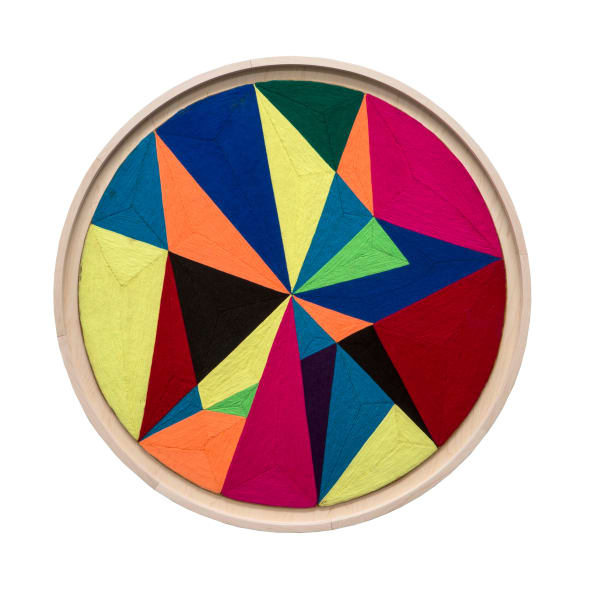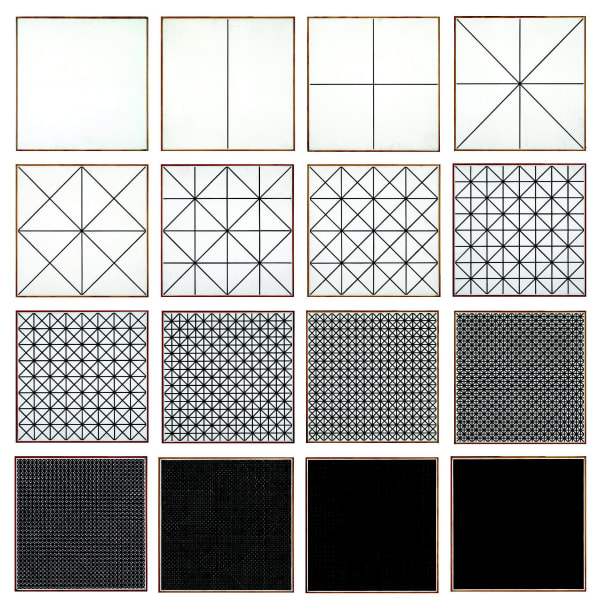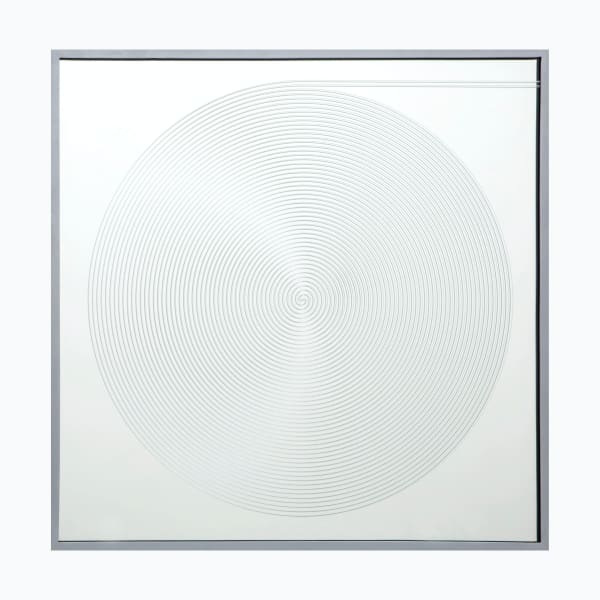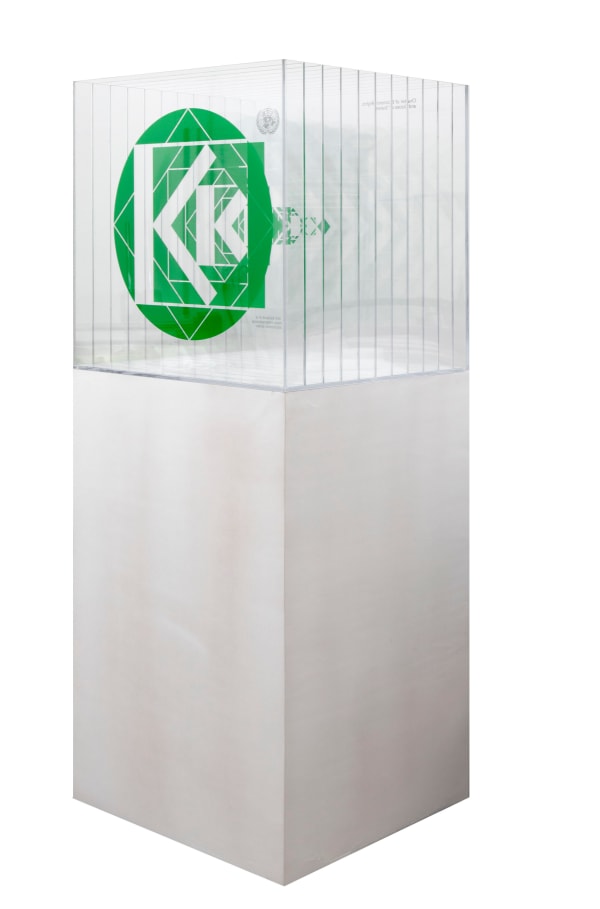Eduardo Terrazas: The Predicament of Mankind
-
-
Eduardo Terrazas
The Predicament of MankindNovember 2 – December 21, 2013
MELLEMRUMMET, NY CARLSBERGVEJ 68, COPENHAGENIt is our great pleasure to introduce the exhibition The Predicament of Mankind by the Mexican architect, designer and artist Eduardo Terrazas. The show is on view in the gallery’s second exhibition space Mellemrummet and it is his first exhibition in Denmark.
Through weavings, drawings, graphic prints, sculpture, and photography the show allows us to experience Terrazas’ broad disciplined span as an artist. At first glance his works appear like formal investigations of geometrical patterns, which to a certain extent they are, but behind the graphical expression deeper conceptual layers can be found. Some of the works can be dated back to 1975 while others are newly fabricated.
Terrazas got his broad breakthrough in 1968 when he designed the visual identity for the Olympic Games in Mexico. In general Terrazas’ art exists in a constant dialogue with the society that surrounds him: one example being his Huichol-weavings that comment on Mexican traditions and national sentiment. His process being wooden plates covered in tree sap overlaid with colored wool thread fixed to the plate. Such processes reference the Huichol people who are one of the oldest ethnic groups in Mexico and through use of their particular artistic expression Terrazas establishes a connection between the Mexican art and craft tradition and modernistic constructivism. The weavings can still be considered to set themselves apart from constructivism however due to their lack of industrial characteristics that was so often the target of this version of modernism.
With the works Crecimiento Exponencial (Exponential Growth) and Crecimiento Orgánico (Organic Growth) the process is completely different: In 1972 the international and apolitical think tank, The Club of Rome, published the provocative and spectacular book The Limits of Growth. The think tank, that analyzed humanity’s future obstacles, discussed, with the use of analysis and suggestion, how factors such as population figures, industrial production, environmental pollution, food manufacturing and the consumption of natural resources can all be viewed alternatively and can be changed.
In extension to this thought, Terrazas was asked in 1975 to create a publication and an exhibition that could be presented together with a meeting arranged by the Club of Rome and Mexico’s former president, Luis Echeverría. The material was supposed to create a broader understanding of the Club of Rome’s message and with the book Solidarity for Peace and Development Codex Terrazas made a form of visual codex as an appendix for the Club of Rome’s two publications; The Limits of Growth and the later to be published Mankind at the Turning Point.
Through graphics, images and photography Terrazas illustrated the Club of Rome’s idea on humanity’s difficult situation. A smaller selection from the codex were produced as artworks and presented in the exhibition Everything Depends on Everything in 1975. These are some of the works that can be experienced in Mellemrummet. For example the work Crecimiento Exponencial(Exponential Growth) is an exponential growth distributed on 16 prints. The growth is visualized with lines that are constantly being doubled in numbers. This is, according to the Club of Rome, an unhealthy growth that also has a dark ending in Terrazas’ graphical version, unlike the growth that happens in the work Crecimiento Orgánico (Organic Growth) that is a depiction of the organic growth. The experiment with organic growth shows in the first 8 variations to be sustainable whereas the other part (the last 8) seems to be confirming the endless possibilities that organic growth can generate.The body of work of Terrazas is hard to characterize, as it is exceeds the category of visual art. This ensures the work of Terrazas always remains interesting to experience.
Eduardo Terrazas (1936) lives and works in Mexico City, Mexico.
-
Installation views
-
Works
-
 Eduardo Terrazas1.2.12, 1995Wool yarn and Campeche wax on wooden board
Eduardo Terrazas1.2.12, 1995Wool yarn and Campeche wax on wooden board -
 Eduardo Terrazas2.32, 1995Wool yarn and Campeche wax on wooden board
Eduardo Terrazas2.32, 1995Wool yarn and Campeche wax on wooden board -
 Eduardo Terrazas1.2.13, 1995Wool yarn and Campeche wax on wooden board
Eduardo Terrazas1.2.13, 1995Wool yarn and Campeche wax on wooden board -
 Eduardo TerrazasCrecimiento Exponencial (Exponential Growth), 1975-2013Silkscreen on paper
Eduardo TerrazasCrecimiento Exponencial (Exponential Growth), 1975-2013Silkscreen on paper
-
 Eduardo TerrazasCrecimiento Organico (Organic Growth), 1975-2013Silkscreen on paper
Eduardo TerrazasCrecimiento Organico (Organic Growth), 1975-2013Silkscreen on paper -
 Eduardo TerrazasSolidarity for Peace and Development Codex, 1975-2013Codex, 32 pages
Eduardo TerrazasSolidarity for Peace and Development Codex, 1975-2013Codex, 32 pages -
 Eduardo TerrazasTime, 1975-2013White silkscreen on 6mm mirror. Black silkscreen on 6 mm tempered glass. Transparent laminate I PVB 1.14mm. Metal frame
Eduardo TerrazasTime, 1975-2013White silkscreen on 6mm mirror. Black silkscreen on 6 mm tempered glass. Transparent laminate I PVB 1.14mm. Metal frame -
 Eduardo TerrazasCharter of Economic Rights and Duties of States, 1975-2013Silkscreen on acrylic
Eduardo TerrazasCharter of Economic Rights and Duties of States, 1975-2013Silkscreen on acrylic
-
-
Artist Biography
-











